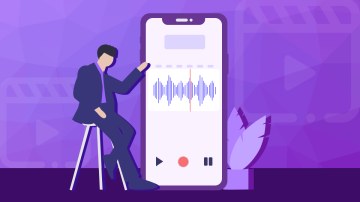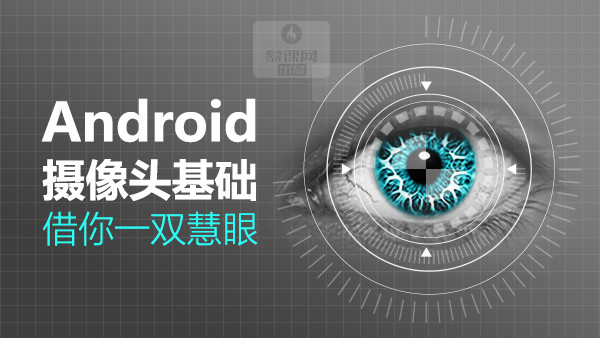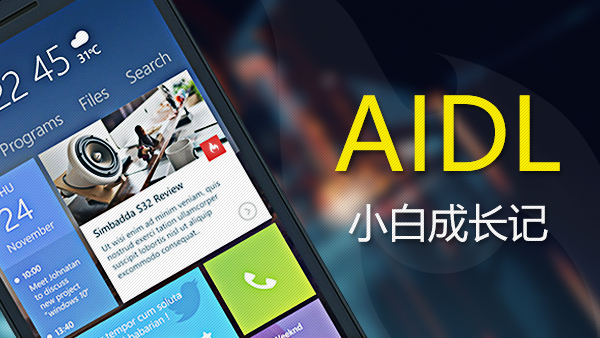上一期我们学习了Activity的创建和配置,当时留了一个悬念,如何才能在默认启动的Activity中打开其他新建的Activity呢?那么本期一起来学习如何启动和关闭Activity。
一、概述
经过前面内容的学习,知道一个Android应用通常都会包含多个Activity,但只有一个Activity 会作为程序的入口——当该Android应用运行时将会自动启动并执行该Activity。至于应用中的其他Activity,通常都由入口 Activity启动,或由入口 Activity启动的Activity启动。
Activity启动其他Activity有如下两个方法。
· startActivity(Intent intent):启动其他 Activity。
· startActivityForResult(Intent intent, int requestCode):以指定的请求码(requestCode)启动Activity,而且程序将会获取新启动的Activity返回的结果(通过重写 onActivityResult(..)方法来获取)。其中requestCode参数代表了启动Activity的请求码,该请求码的值由开发者根据业务自行设置,用于标识请求来源。
上面两个方法都用到了 Intent参数,Intent是Android应用里各组件之间通信的重要方式,一个Activity通过Intent来表达自己“意图”——想要启动哪个组件,被启动的组件既可是 Activity组件,也可是Service组件。
关于Intent的详细使用会在后续部分学习,这里先知道创建Intent对象的两个方法,在开发中根据自己喜好选择使用其中一种即可,具体代码如下。
1. // 方式一
2. // 创建Intent对象
3. Intentintent1=newIntent();
4. // 设置需要启动的Activity,以及要启动Activity的上下文环境
5. intent1.setClass(this,MyActivity.class);
6.
7.
8. // 方式二
9. // 直接创建Intent对象,包含要启动的Activity信息
10. Intentintent2=newIntent(this,MyActivity.class);
Android为关闭Activity准备了如下两个方法。
· finish():结束当前 Activity。
· finishActivity(int requestCode):结束以 startActivityForResult(Intent intent, int requestCode)方法启动的 Activity。
二、示例
接下来通过一个示例程序来学习Activity的启动和关闭。
仍然使用上期创建的ActivitySample工程,为了便于代码管理,这里新建一个activitystartupshutdown的Module。该Module一共包含了2个Activity,并在AndroidManifest清单文件中配置两个Activity。
其中第一个Activity的界面布局非常简单,只包含一个按钮和文本提示,其中按钮的作用主要是启动第二个Activity。第一个Activity对应的布局文件activity_main.xml的代码如下:
[代码]xml代码:
?
01 02 03 04 05 06 07 08 09 10 11 12 13 14 15 | <?xml version="1.0" encoding="utf-8"?>
<RelativeLayout xmlns:android="http://schemas.android.com/apk/res/android"
android:layout_width="match_parent"
android:layout_height="match_parent" >
<Button
android:id="@+id/start_btn"
android:layout_width="match_parent"
android:layout_height="wrap_content"
android:text="启动第二个Activity"/>
<TextView
android:layout_width="wrap_content"
android:layout_height="wrap_content"
android:layout_centerInParent="true"
android:text="我是MainActivity" />
</RelativeLayout>
|
第二个Activity对应的布局也比较简单,包含3个按钮和一个文本提示,其中一个按钮用于简单的返回上一个Activity,第二个按钮用于结束自己并返回上一个Activity,第三个按钮直接结束自己。第二个Activity对应的布局文件activity_second.xml的代码如下:
[代码]xml代码:
?
01 02 03 04 05 06 07 08 09 10 11 12 13 14 15 16 17 18 19 20 21 22 23 24 25 26 27 | <?xml version="1.0" encoding="utf-8"?>
<RelativeLayout xmlns:android="http://schemas.android.com/apk/res/android"
android:layout_width="match_parent"
android:layout_height="match_parent" >
<Button
android:id="@+id/back_btn"
android:layout_width="match_parent"
android:layout_height="wrap_content"
android:text="返回"/>
<Button
android:id="@+id/back_close_btn"
android:layout_width="match_parent"
android:layout_height="wrap_content"
android:layout_below="@id/back_btn"
android:text="返回并关闭自己"/>
<Button
android:id="@+id/close_btn"
android:layout_width="match_parent"
android:layout_height="wrap_content"
android:layout_below="@id/back_close_btn"
android:text="关闭自己"/>
<TextView
android:layout_width="wrap_content"
android:layout_height="wrap_content"
android:layout_centerInParent="true"
android:text="我是SecondActivity" />
</RelativeLayout>
|
AndroidManifest清单文件的Activity配置如下:
[代码]xml代码:
?
01 02 03 04 05 06 07 08 09 10 11 12 13 14 15 16 17 18 19 20 21 22 | <?xml version="1.0" encoding="utf-8"?>
<manifest xmlns:android="http://schemas.android.com/apk/res/android"
package="com.jinyu.cqkxzsxy.android.activitystartupshutdown">
<application
android:allowBackup="true"
android:icon="@mipmap/ic_launcher"
android:label="@string/app_name"
android:roundIcon="@mipmap/ic_launcher_round"
android:supportsRtl="true"
android:theme="@style/AppTheme">
<activity android:name=".MainActivity">
<intent-filter>
<action android:name="android.intent.action.MAIN"/>
<category android:name="android.intent.category.LAUNCHER"/>
</intent-filter>
</activity>
<activity android:name=".SecondActivity">
</activity>
</application>
</manifest>
|
然后编辑第一个Activity,MainActivity的代码如下:
[代码]java代码:
?
01 02 03 04 05 06 07 08 09 10 11 12 13 14 15 16 17 18 19 20 21 22 23 24 25 26 27 28 29 30 31 32 33 | package com.jinyu.cqkxzsxy.android.activitystartupshutdown;
import android.content.Intent;
import android.os.Bundle;
import android.support.v7.app.AppCompatActivity;
import android.view.View;
import android.widget.Button;
/**
* @创建者 鑫鱻
* @描述 Android零基础入门到精通系列教程,首发微信公众号ShareExpert
*/
public class MainActivity extends AppCompatActivity {
@Override
protected void onCreate(Bundle savedInstanceState) {
super.onCreate(savedInstanceState);
setContentView(R.layout.activity_main);
// 获取应用程序中的启动按钮
Button startBtn = (Button) findViewById(R.id.start_btn);
// 为启动按钮绑定事件监听器
startBtn.setOnClickListener(new View.OnClickListener() {
@Override
public void onClick(View source) {
// 创建需要启动的Activity对应的Intent
Intent intent = new Intent(MainActivity.this, SecondActivity.class);
// 启动intent对应的Activity
startActivity(intent);
}
});
}
}
|
接着编辑第二个Activity,SecondActivity的代码如下:
[代码]java代码:
?
01 02 03 04 05 06 07 08 09 10 11 12 13 14 15 16 17 18 19 20 21 22 23 24 25 26 27 28 29 30 31 32 33 34 35 36 37 38 39 40 41 42 43 44 45 46 47 48 49 50 51 52 53 54 55 56 57 58 | package com.jinyu.cqkxzsxy.android.activitystartupshutdown;
import android.content.Intent;
import android.os.Bundle;
import android.support.v7.app.AppCompatActivity;
import android.view.View;
import android.widget.Button;
/**
* @创建者 鑫鱻
* @描述 Android零基础入门到精通系列教程,首发微信公众号ShareExpert
*/
public class SecondActivity extends AppCompatActivity {
@Override
protected void onCreate(Bundle savedInstanceState) {
super.onCreate(savedInstanceState);
setContentView(R.layout.activity_second);
// 获取应用程序中的返回按钮
Button backBtn = (Button) findViewById(R.id.back_btn);
// 获取应用程序中的返回关闭按钮
Button backCloseBtn = (Button) findViewById(R.id.back_close_btn);
// 获取应用程序中的关闭按钮
Button closeBtn = (Button) findViewById(R.id.close_btn);
// 为返回按钮绑定事件监听器
backBtn.setOnClickListener(new View.OnClickListener() {
@Override
public void onClick(View source) {
// 获取启动当前Activity的上一个Intent
Intent intent = new Intent(SecondActivity.this, MainActivity.class);
// 启动intent对应的Activity
startActivity(intent);
}
});
// 为返回关闭按钮绑定事件监听器
backCloseBtn.setOnClickListener(new View.OnClickListener() {
@Override
public void onClick(View source) {
// 获取启动当前Activity的上一个Intent
Intent intent = new Intent(SecondActivity.this, MainActivity.class);
// 启动intent对应的Activity
startActivity(intent);
// 结束当前Activity
finish();
}
});
// 为关闭按钮绑定事件监听器
closeBtn.setOnClickListener(new View.OnClickListener() {
@Override
public void onClick(View source) {
// 结束当前Activity
finish();
}
});
}
}
|
上面程序中前两个按钮的监听器里的处理代码只有一行区别:finish(),如果有这行代码,则表明该Activity会结束自己。
运行程序,可以看到下图左侧所示界面。
点击MainActivity中的启动按钮,可以启动SecondActivity,如上图右侧所示。
经过操作SecondActivity中的三个按钮,会发现都能回到MainActivity,大家可以思考一下这里有什么区别呢?
今天就先到这里,如果有问题欢迎留言一起探讨,也欢迎加入Android零基础入门技术讨论微信群,共同成长!
原文链接:http://www.apkbus.com/blog-205190-75842.html
打开App,阅读手记

 随时随地看视频
随时随地看视频




